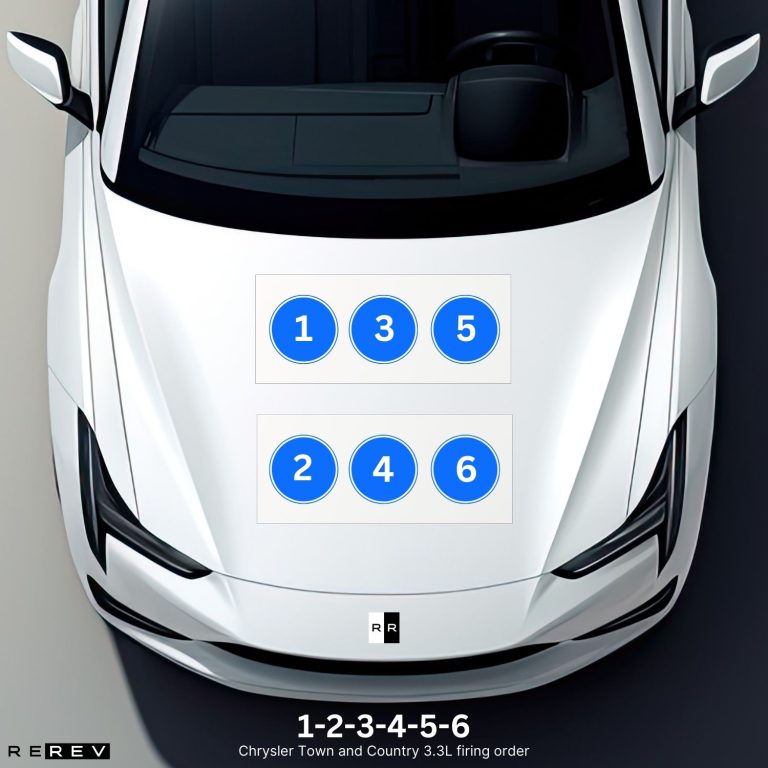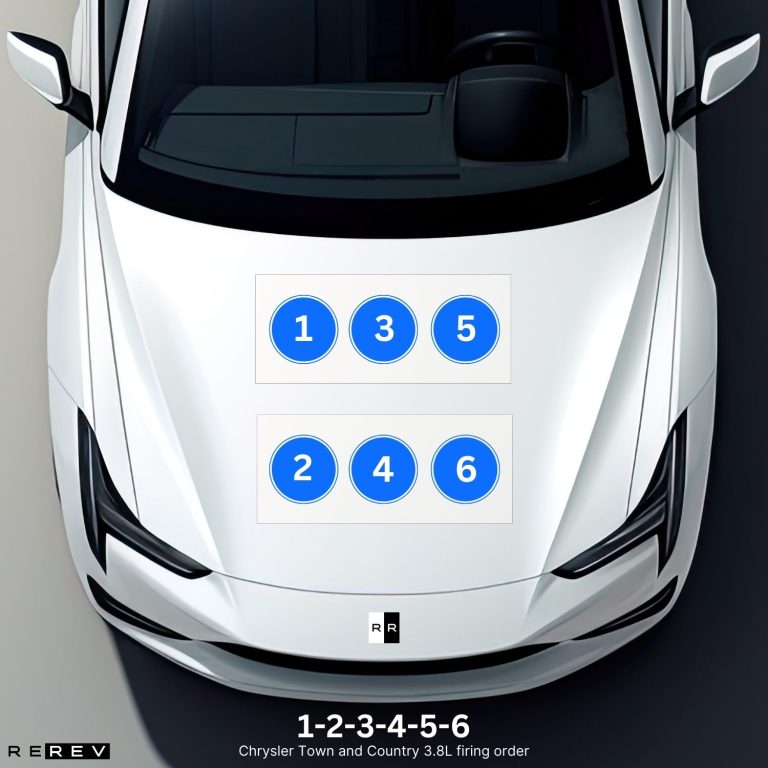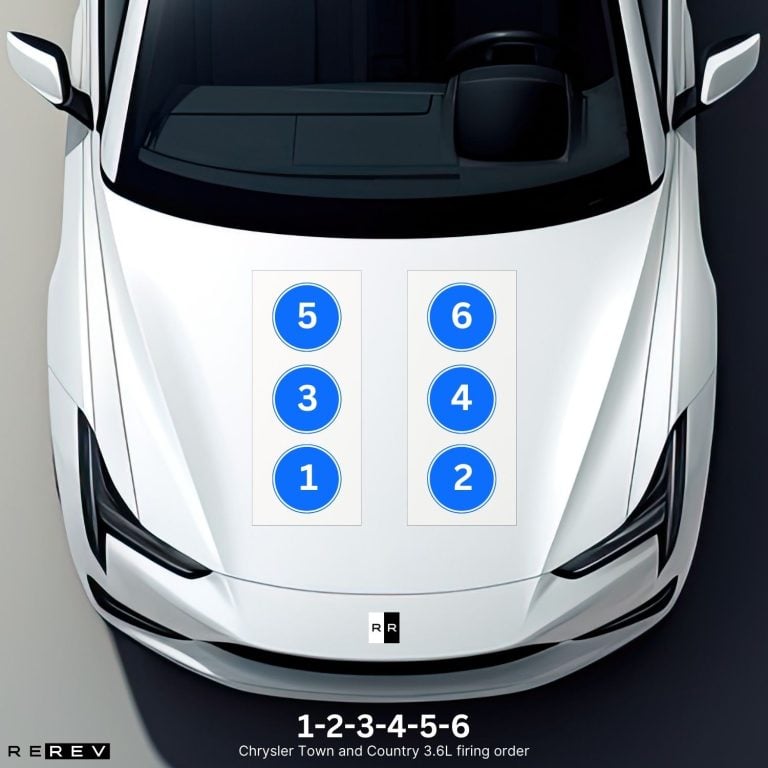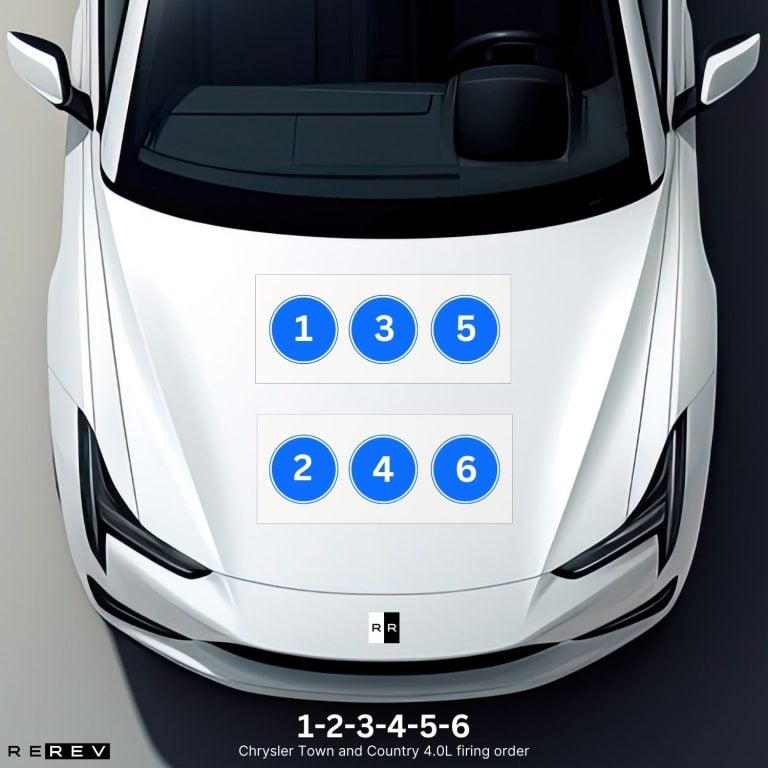Chrysler Town and Country (1996-2016) firing order — diagram & guide

A few years back, Chrysler’s flagship minivan, Town and Country, seized production in its fifth generation, but the model is still pretty active on the used car market. If you own one of these, you’ll know just how reliable they are, but it’s to be expected that occasionally some misfires or similar issues may occur.
Like with all used cars, you have to know the Chrysler Town and Country (1996-2016) firing order to deal with those issues if you plan on repairing the damage yourself. So, our team of automotive experts will set you on the right track as we explore all the different Chrysler Town and Country engines, their firing orders, and cylinder layouts so you can get started.
| TOWN AND COUNTRY | ENGINE | FIRING ORDER |
|---|---|---|
| 3rd Gen (1996-2000) | 3.3L V6 | 1-2-3-4-5-6 |
| 3.8L V6 | 1-2-3-4-5-6 | |
| 4th Gen (2001-2007) | 3.3L | 1-2-3-4-5-6 |
| 3.8L | 1-2-3-4-5-6 | |
| 5th Gen (2008-2016) | 3.3L V6 | 1-2-3-4-5-6 |
| 3.8L V6 | 1-2-3-4-5-6 | |
| 4.0L V6 | 1-2-3-4-5-6 | |
| 3.6L V6 | 1-2-3-4-5-6 |
Third-generation Town and Country (1996-2000) firing order
The third-gen Town and Country featured two main engines, both of which were naturally aspirated V6s. As it turned out, both these engines would also remain among the offered options until the end of the production run, so we’ll start with their firing orders.
Chrysler Town and Country 3.3L firing order

As the base engine option, the 3.3-liter Town and Country has a firing order of 1-2-3-4-5-6, and hopefully, we’ll save you a lot of time and effort when we say that this firing order goes for all the V6 engines. It was the signature firing sequence of Chrysler engines at that time, but not all the engines were built with the same cylinder layout.
So, this one is different in the sense that it uses a transverse cylinder placement, which means there’s an upper and a lower cylinder bank. Cylinders 1, 3, and 5 are positioned at the top going left to right, with cylinders 2, 4, and 6 being right below those, also ordered left to right.
Chrysler Town and Country 3.8L firing order

The 3.8-liter engine is pretty similar to the 3.3-liter one since the Chrysler Town and Country 3.8L firing order is 1-2-3-4-5-6 as well. Just like the 3.3-liter engine, this one also features the same transverse cylinder placement with cylinders numbered 1, 3, and 5 at the top bank, and 2, 4, and 6 at the lower bank.
Fourth-generation Chrysler Town and Country (2001-2007) firing order
For the fourth-gen Town and Country, Chrysler has decided to keep both the 3.3L and the 3.8L engines. These still featured the same transverse placement with the 1-2-3-4-5-6 firing order, and there were no added options for this generation of the minivan.
Fifth-generation Chrysler Town and Country (2008-2016) firing order
The fifth-generation model finally brought some changes and a few more engine options, starting with the 4.0-liter V6. There was also the addition of the Pentastar V6, while the 3.3L and 3.8L engines were still offered as base options.
Chrysler Town and Country 3.6L firing order

The Chrysler Town and Country 3.6L firing order is 1-2-3-4-5-6 as well, but this time we had a major difference in the way cylinders are arranged. To be precise, this engine wasn’t a transverse V6 like the previously mentioned options, so the configuration of cylinders within the engine is different.
So, you’ll find cylinders 1, 3, and 5 ordered front to rear on the passenger’s side, and cylinders 2, 4, and 6 on the driver’s side also numbered in the same way.
Chrysler Town and Country 4.0L firing order

Finally, the 4.0-liter engine was offered as yet another V6 option for the fifth-gen Town and Country. Once again, the firing order was 1-2-3-4-5-6 and this engine marked the return of the transverse cylinder layout. So, cylinders 1, 3, and 5 were all arranged within the top cylinder bank from left to right, while cylinders 2, 4, and 6 were placed below them.
Our take
Overall, the Town and Country provided drivers with a lot of dependable V6 engine options, and hopefully, this guide can help you figure out the maintenance tasks. So, make sure to follow it closely to avoid confusion, especially when it comes to differentiating between the transverse and longitudinal Chrysler V6s in this model.